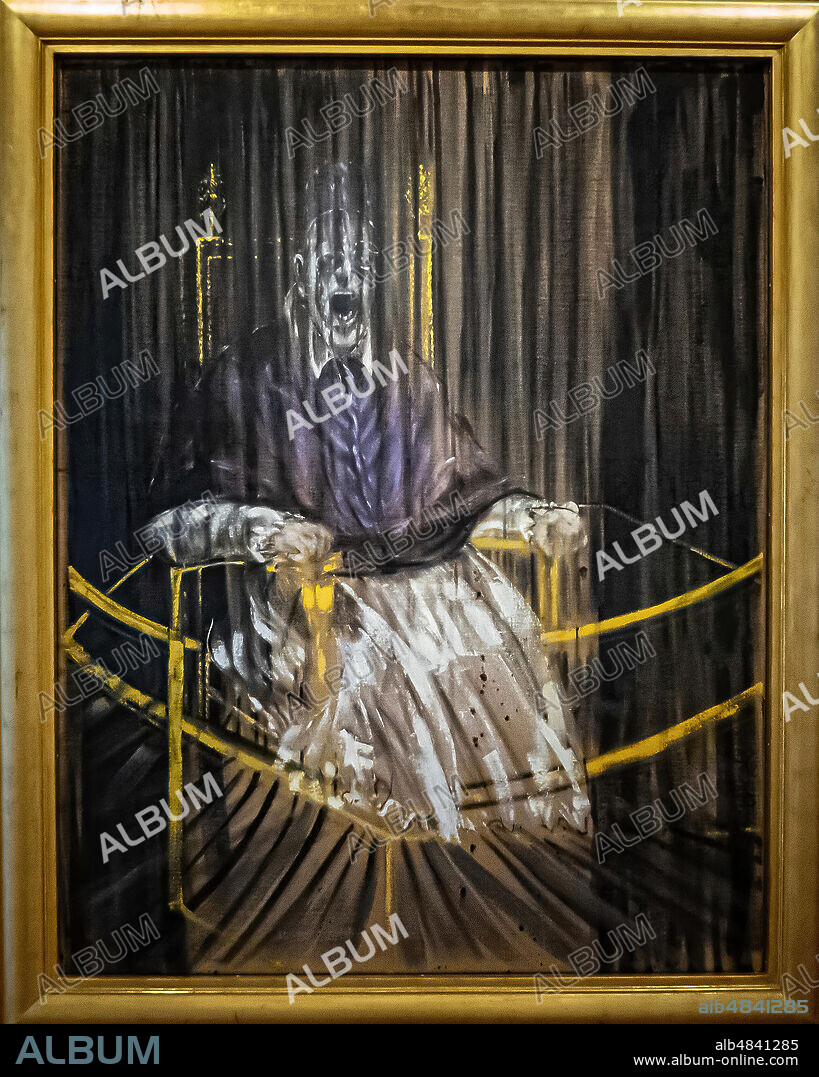Francis Bacon, a towering figure in the world of modern art, has left an indelible mark with his haunting depictions that delve deep into the human psyche. Among his most celebrated works is Study After Velázquez's Portrait of Pope Innocent X, a piece that reinterprets Diego Velázquez's classic portrait. This artwork not only showcases Bacon's unique style but also invites viewers to explore the complexities of influence and originality in art.
This masterpiece serves as a bridge between the classical and contemporary art worlds, challenging traditional perspectives while invoking a visceral emotional response. By examining this painting, we can gain insights into how artists like Francis Bacon transform historical works into powerful expressions of modern sentiments. The following exploration delves into the intricacies of this iconic piece, offering a deeper understanding of its significance in the realm of art history.
Reimagining a Masterpiece
Francis Bacon's Study After Velázquez's Portrait Of Pope Innocent X stands as a testament to the enduring legacy of artistic reinterpretation. Painted in 1953, this work takes inspiration from Diego Velázquez's renowned 1650 portrait of Pope Innocent X. However, Bacon's version diverges sharply from the original, presenting a distorted, almost nightmarish vision of the pontiff. Through this radical transformation, Bacon captures the psychological turmoil and existential angst that define much of his oeuvre.
The unsettling visage of the pope in Bacon's rendition is both captivating and disturbing, inviting viewers to confront uncomfortable truths about power, authority, and humanity itself. By distorting the serene countenance of Velázquez's pope, Bacon challenges the viewer's perception, prompting questions about the nature of reality and representation in art. This bold departure from tradition underscores Bacon's commitment to exploring the darker recesses of the human experience.
Bacon's choice to revisit Velázquez's masterpiece reflects his profound respect for the Spanish artist's technical mastery and compositional brilliance. Yet, rather than merely replicating the original, Bacon uses it as a springboard for his own creative expression. In doing so, he demonstrates how artists can honor their predecessors while forging new paths in the pursuit of artistic innovation.
Artistic Dialogue Across Centuries
The juxtaposition of Velázquez's serene portrayal with Bacon's anguished interpretation creates a compelling dialogue between two distinct eras. While Velázquez's portrait exudes dignity and composure, Bacon's version embodies chaos and unrest. This contrast highlights the shifting cultural contexts that inform artistic production over time. It also underscores the transformative potential of art, which allows for endless reinterpretations and reinventions.
By placing these two works side by side, one gains a richer appreciation for the nuances of each artist's vision. Velázquez's meticulous attention to detail and nuanced use of light serve as a counterpoint to Bacon's raw, expressive brushwork and dramatic color palette. Together, they illustrate the diverse ways in which artists engage with themes of identity, spirituality, and the human condition.
This interplay between past and present enriches our understanding of both artworks, revealing the intricate web of influences that shape the trajectory of art history. As such, Bacon's reinterpretation not only pays homage to Velázquez but also expands the conversation around what constitutes great art and how it evolves through time.
A Journey Through Emotion and Expression
Beyond its technical merits, Francis Bacon's Study After Velázquez's Portrait Of Pope Innocent X resonates on a deeply emotional level. The painting's vivid colors and dynamic composition draw viewers into a world where fear, vulnerability, and resilience coexist. This immersive experience encourages introspection, urging audiences to reflect on their own responses to the depicted subject matter.
Moreover, the intensity of Bacon's portrayal speaks to universal concerns about the fragility of human existence and the search for meaning amidst uncertainty. His ability to convey such complex emotions through visual means attests to his genius as an artist and his capacity to connect with people across different backgrounds and cultures. Such universality ensures that his work remains relevant long after its creation.
In conclusion, Francis Bacon's Study After Velázquez's Portrait Of Pope Innocent X exemplifies the power of art to transcend boundaries and provoke thought. By merging elements of tradition with contemporary sensibilities, Bacon crafts a compelling narrative that continues to captivate and inspire those who encounter it. His masterpiece serves as a reminder of the infinite possibilities inherent in artistic expression and the enduring impact of visionary creators like himself.

